5 “Basic” Yoga Poses That You Need to Keep Practicing
This article originally appeared on Yoga Journal
After you've been practicing yoga for a while, your impulse may be to focus on the more complex poses and take the basics for granted. After all, when you're finally able to lift into Firefly, pressing up into Baby Cobra may seem a little anticlimactic. When you can hold yourself up in Handstand, it's easy to forget how long it took you to balance in Tree.
But as you add more asanas to your yoga repertoire, you want to keep practicing the poses that help you get there. Foundational poses, practiced with intention and integrity, are the building blocks for all the rest. For example, you can't do Eka Pada Koundinyasana (Hurdler's Pose) without a solid Chaturanga. And Pincha Mayurasana is built on a sturdy and aligned Forearm Plank.
Why basic yoga poses are important
We can tend to go into mental "autopilot" as our practice evolves, says Sation Konchellah, a mental-health counselor and yoga teacher based in North Carolina. "We don’t think about all of the components that go into making up the shape and the posture," she says.
In part that's because poses become second nature after you have practiced them enough. Konchellah calls that "putting the yoga in my body." She means having all the movements, positioning, and actions down so thoroughly that they become ingrained. The key is not to lose sight of the details of "easy poses" that support more complex ones. That mental engagement makes the difference between being present in a pose versus "throwing your body around."
Paying attention to basics helps you avoid injuries and maintain a firm foundation for all poses. Mindfully practicing so-called "easy" poses when you feel like an "advanced" yoga practitioner can also challenge your ego, Konchellah says.
5 basic yoga poses that build strong foundations
The following basic yoga poses can help you build a strong foundation for your practice.
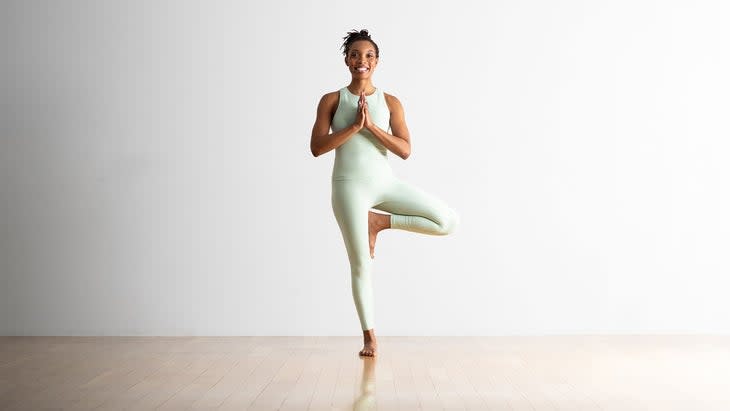
Vrksasana (Tree)
"Some people come to the class and say, 'I want to work on my core,'" says Leslie Kelson, a 500-hour yoga teacher and a licensed massage and bodywork therapist based in Charlotte. They may be surprised when she suggests they practice Tree Pose, but maintaining balance in Vrksasana requires you to use your abs and engage your trunk.
As you find balance, strength, and hip opening in Tree, you also have what you need for Hand-to-Big-Toe Pose. It can also help you prepare for Eka Pada Koundinyasana (Hurdler's Pose). Opening the hip out to the side and lifting your knee prepares your body for the shape you create in that posture.
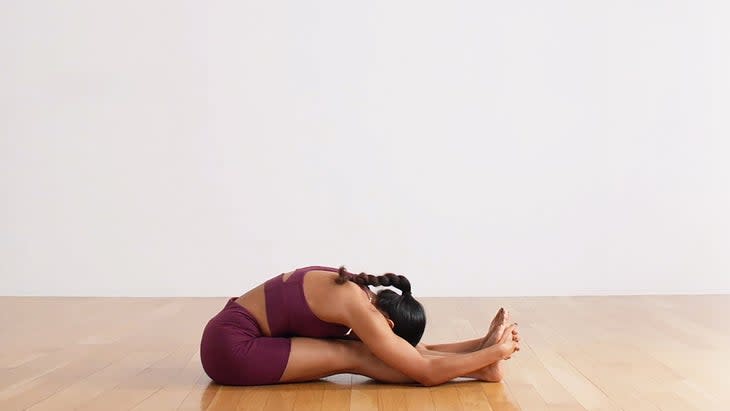
Paschimottanasana (Seated Forward Bend)
Lifting your knees and engaging the quads in Seated Forward Bend creates an automatic hamstring stretch, Konchellah says. This is the principle anatomy experts refer to as reciprocal inhibition of opposing muscle groups. "When one is strengthening, the other is lengthening," she explains.
Cultivating length along the hamstrings and the back of your body in a seated position prepares you for the many poses that require length along the back of your legs. In this way, Forward Fold helps you get strong leg extension in Utthita Hasta Padangusthasana (Extended Hand-to-Big-Toe Pose) and Urdhva Prasarita Eka Padasana (Standing Splits). Svarga Dvijasana (Bird of Paradise) and Tittibhasana (Firefly Pose) also require length in the hamstrings which we develop in this forward fold on the mat.
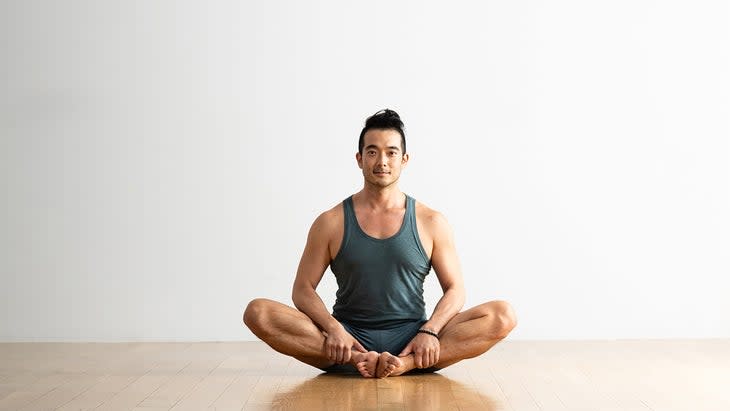
Baddha Konasana (Bound Angle)
Bound Angle pose opens your hips and gives you a strong inner-thigh stretch--good preparation for Malasana (Garland Pose) as well as hip-opening poses such as Virasana II (Warrior 2), Bakasana (Crane), Goddess Pose, and Skandasana.
Folding forward and engaging the abs in Bound Angle also helps you prepare for the tilt and lift that happens when you eventually practice Bhujapidasana (Shoulder Pressing Pose).
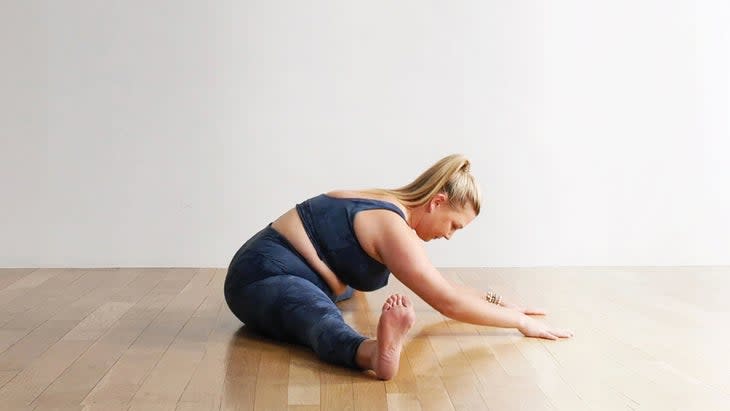
Prasarita Padottanasana (Wide-Legged Forward Fold)
This posture involves the leg extension, groin stretch, and forward fold that you use to come into Tittibhasana (Firefly Pose). Kelson, who teaches Yin yoga, suggests holding the pose for several breaths.
"That’s why I love Yin." she says. "Because the longer you hold a pose, the more your body will open up for you." Then, when you are lifting into Firefly, your body will "remember" and maintain the position.
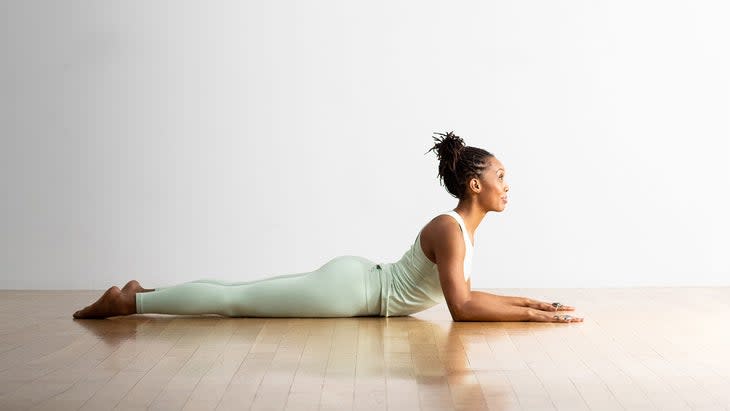
Sphinx Pose
Sometimes called Salamba Bhujangasana, this gentle backbend prepares your spine and the muscles of your back for other poses that require a spinal extension, such as Bhujangasana (Cobra Pose), Salabhasana (Locust Pose), and Urdhva Mukha Svanasana (Upward Facing Dog).
Supporting yourself on your forearms in Sphinx can give you the opportunity to create more space along your spine. If you're like most people, you have more mobility in your lower back than in the thoracic spine. In Sphinx you can practice developing an even arch along the full length of your spine-making sure you don't crunch your lower back or neck, and cultivating openness in your mid-back. This pose also gently stretches the front of your body. When it's time to come into Ustrasana (Camel Pose), Urdhva Dhanurasana (Upward Bow/Wheel Pose), or Dhanurasana (Bow Pose), you can access the mobility you need in your back as well as the stretch in your front body.
For exclusive access to all of our fitness, gear, adventure, and travel stories, plus discounts on trips, events, and gear, sign up for Outside+ today.

